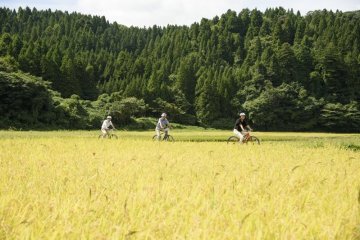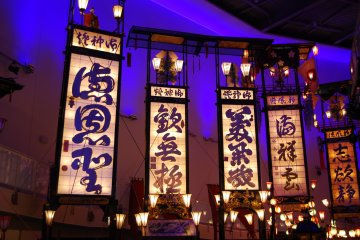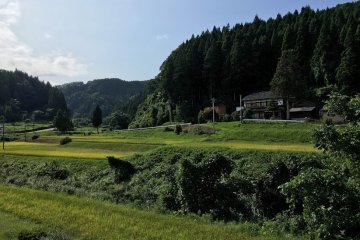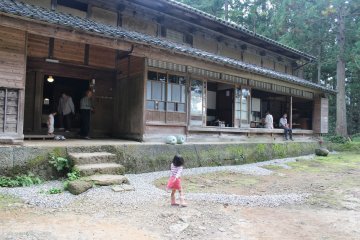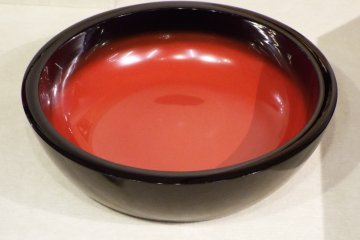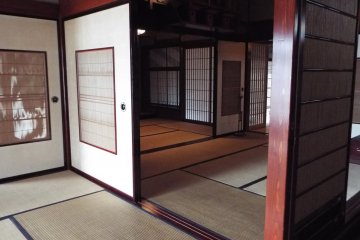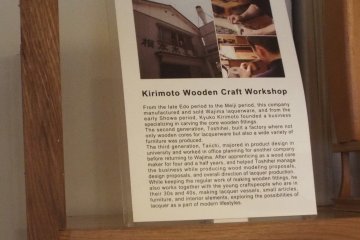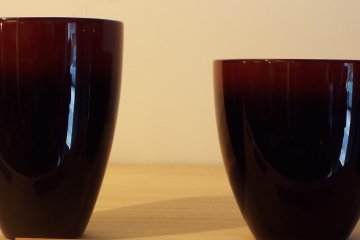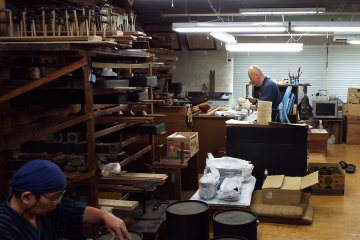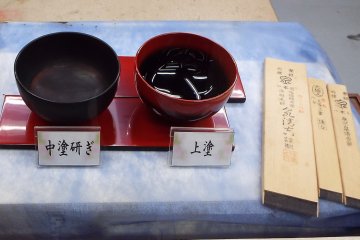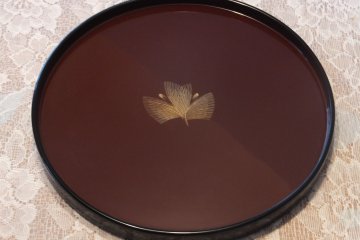Noto Lacquerware is considered the best in Japan and the most expensive. When you look into how each piece is made, the quality, and longevity, then the price becomes less of an issue.
After touring three of the over 500 lacquerware shops in Wajima, I was astonished at what it takes to make just one piece.
The process begins with the drying of Noto Cyprus, White Bark Magnolia, and other trees, which in some cases takes almost two years to dry.
There are a total of 75 to 130 stages in the process of making one Lacquerware product, all by hand.
It may take one year and many different craftsmen before a single bowl has been completed.
Wajima started producing high quality lacquerware products during the Edo period. A combination of Urushi tree sap, and a soil of fossilized algae called diatomaceous is what makes Noto Peninsula standout from others in the production of lacquerware.
Even obtaining the sap from the Urushi tree is not a simple process. The time of year and the way the tree is cut determines the quality of sap. When combined with the diatomaceous it forms a solid undercoating and finish coating that only a very experienced craftsman can apply.
You start with the base making, which depending on the product can involve carving, bending thin strips of wood, and assembling. Then comes the lacquer process with undercoatings to help shape the product, polishing, and finish coatings. Finally, if a decoration is required there will be additional steps including hand rubbing to create a permanent gloss. I learned that after your initial use of the product, the gloss starts to become even brighter.
The shops are not some big manufacturing facility and most are old historic houses where the owners maintained both a residence and shop, under one roof.
One such home was Wajima Zen-Ni established in 1813. The original owner was a visionary in that his craftsmen were required to walk through the beautifully crafted residence in order to reach their work areas. His thinking was that every time they viewed his home they would be encouraged to make the highest quality products in Wajima. The walls, ceilings, furniture, and even the indoor well were all covered with high gloss Urushi lacquer. Please note group tours are not available, but up to four people at a time are allowed with advance reservations. They have a very nice showroom where you can purchase sets or pieces.
I also visited the Kirimoto Wooden Craft Workshop operated by Taiichi Kirimoto. The company has a 200-year history of carving the Japanese white-bark magnolia and the lacquer finishing process. Mr. Kirimoto has a non-traditional vision of designing and producing many different products for everyday use at an affordable price. His goal is to provide ware from cradle to grave and expand markets to all major western countries. His enthusiasm during the presentation was so catching that I almost wanted to volunteer to help him with marketing. His unique work can been seen throughout the Tokyo area at places like the Ritz Carlton (Sushi restaurant countertop) and even a Starbucks in Yokohama has his lacquerware tabletops. When making reservations to visit his shop ask if his wife will be there, she speaks fluent English.
My final tour was at Shioyasu Urushi Ware Company, an old shop established in 1858. While producing traditional ware, they too are thinking outside the box with products such as audio speakers and fashion accessories. During this tour we viewed the production process in action. Through a series of windows, our guide explained each of the processes involved from the carving, too the dust free environment required to apply the final lacquer coats. This process is very intricate and one mistake could ruin a piece before it ever makes it to the retail shop.
I have a much greater appreciation for lacquerware products after seeing what is involved in creating such works of art.
The three tours were not in English, so you will need an interpreter to accompany you during your visit. You may be able to find a local by contacting the WAJIMA KANKO KYOKAI visitor center.
Yes, I did make a purchase of a very beautiful tray for Miwa. It was on sale and I could not pass up a bargain.



